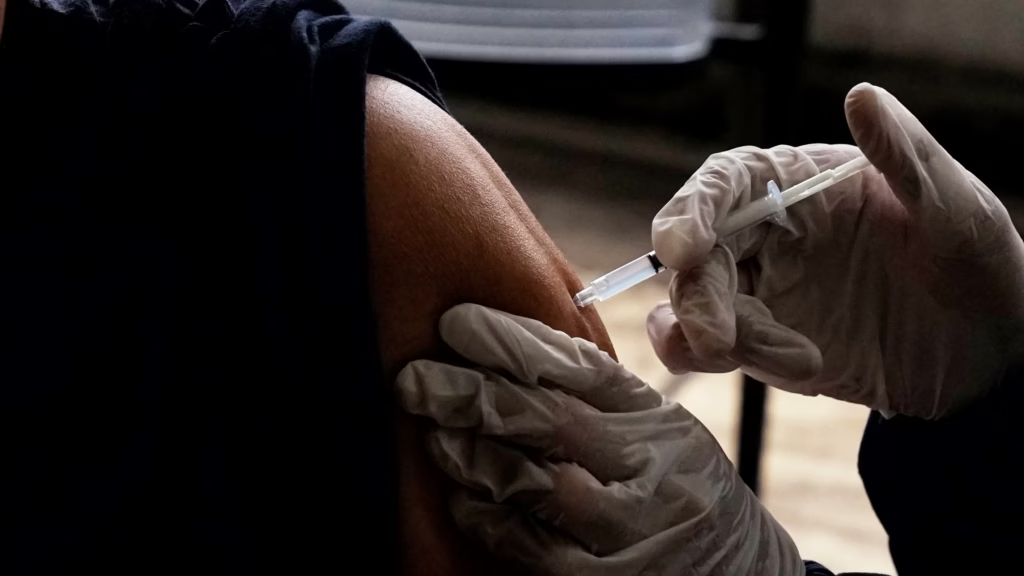News Team member Merom Arthur describes what is known about the relationship between climate change and extreme weather and how we can prepare for these events.
The Online Aesthetic with Real-World Consequences
The online “trad-wife” trend promotes vaccine hesitancy and medical mistrust.
By Stephanie Oehler

Measles was once considered eradicated from the United States, but the first four months of 2025 have been marked by a significant resurgence of the virus, with nearly 1,000 cases and 3 deaths across 30 states.
The sharp rise of this vaccine-preventable illness is largely due to low vaccination rates in vulnerable communities. Experts have long identified social media as a channel for misinformation and disinformation that encourages parents to opt out of vaccinating their children. Now, the “trad-wife” aesthetic, one of the latest social media trends, is further fueling anti-vaccine ideology in online communities.
“Trad-wife”, short for traditional wife, describes a growing subculture of women who embrace traditional gender roles and idealize mid-20th century family life. At a surface level, they may enjoy homeschooling their children, preparing home-cooked meals while their husband works, or tending to gardens or farm animals. On a deeper level, however, the obsession with a traditional lifestyle may result in a rejection of public health recommendations and scientific evidence in favor something that seems more “natural.”
Public health experts warn that the cultural narrative of reverting back to outdated social norms fuels mistrust in modern medicine, particularly vaccine hesitancy. Recent outbreaks of vaccine-preventable diseases demonstrate the need for public health officials to engage fringe online communities, such as “trad-wives”, to protect young children and families.

The 21st Century Anti-Vaccine Movement
The U.S. has reached its second-highest number of measles cases since 2000 in only 4 months. Recent outbreaks have been a somber but, unfortunately, unsurprising occurrence to public health experts, as the national vaccination rate among U.S. kindergarteners fell nearly 3 percentage points between the 2019-2020 and 2023-2024 school years.
This 3 percent decrease brought the national kindergartener vaccination rate beneath the necessary coverage level of 95 percent, the threshold of individuals in a community who must be immunized to prevent future outbreaks.
Numerous studies show that the most common reasons parents refuse to vaccinate their children are religious or personal beliefs, safety concerns, or a desire for more information. All these hesitations can be traced back to the basic idea of purity.
“There’s this sort of appeal to natural living that we see coming from all levels,” said Robert Bednarczyk, PhD, an associate professor of global health and epidemiology at the Emory University Rollins School of Public Health and the associate director for vaccine policy at the Emory Vaccine Center. The moral value of purity plays a significant role in many anti-vaccine decisions, he added.
This fascination with naturalism and purity at the core of the anti-vaccination movement also drives the trad-wife aesthetic. Many trad-wives favor natural immunity, home births, and herbal remedies over what they see as a dangerous, cold, and profit-driven medical system.
Public health experts argue that this romanticization of the past neglects the reality of the world before vaccines were available. Measles was widespread and deadly prior to the distribution of the vaccine in 1963. The U.S. experienced 3 to 4 million infections annually, with 50,000 of these resulting in hospitalizations and 500 resulting in death. This history serves as a reminder of why vaccine-mediated immunity is safer than the natural route.
“You can get that immune system stimulation without getting sick. Vaccines do that,” Bednarczyk said. “You don’t have to suffer through a potentially life-threatening illness to get those benefits.”

Why Natural Lifestyles Appeal to Young Mothers
The messaging of any natural lifestyle movement resonates better than scientific public health messaging for many young mothers. Epidemiologists say this is due to a poor collective memory and the appeal of a more “authentic” lifestyle, like those lived by our ancestors.
“Our collective memory isn’t great — people aren’t alive today who remember babies dying from what have been preventable diseases now for decades,” said Lauren Christiansen-Lindquist, a maternal and child health epidemiologist and associate professor at the Emory University Rollins School of Public Health.
The absence of memories of the world before vaccines and modern medicine can easily be filled by misinformation, especially on social media.
Trad-wife influencers promote wellness routines, homemade remedies, and even misconstrued stories about vaccines causing harm. This content is easily accessible on platforms such as Facebook, Instagram, X, and TikTok, and, with enough exposure, young mothers may begin to value this messaging over the expertise of their doctors.
“Natural things sound very appealing to people because they’re easy to understand,” Bednarczyk said.
The Public Health Marketing Gap
Public health messaging is often drowned out by louder and more engaging online movements, such as the politicization and misinformation around vaccination. The trad-wife aesthetic is just one example of how these trends can undermine trust in science and modern medicine.
“Public health has a marketing problem. We recognize that the world is more complicated than a sound bite, which is how people are consuming information these days,” Christiansen-Lindquist said. “We have to figure out a good balance of how we can quickly address these online trends before it’s too late,” she added.
Experts emphasize that simply repeating “vaccines are safe and effective” is not enough to gain the public’s trust anymore.
“If we just bombard people with a bunch of facts and figures and statistics, they’re just going to shut down because it’s too much to process,” Bednarczyk said. “It’s so important to be able to meet people where they’re at.”
Part of that means acknowledging real safety concerns about vaccines. Vaccines are overwhelmingly safe, but side effects such as fevers, swelling, or rare occurrences of allergic reactions can be scary to parents. These concerns must be addressed head-on rather than glossed over.
Moreover, misinformation must be combatted through the same channel that it is spread. Public health agencies can better engage the public through stronger and more relatable messaging online. The greatest challenge for public health may no longer be the diseases themselves, but the cultural movements that allow these diseases to persist.
